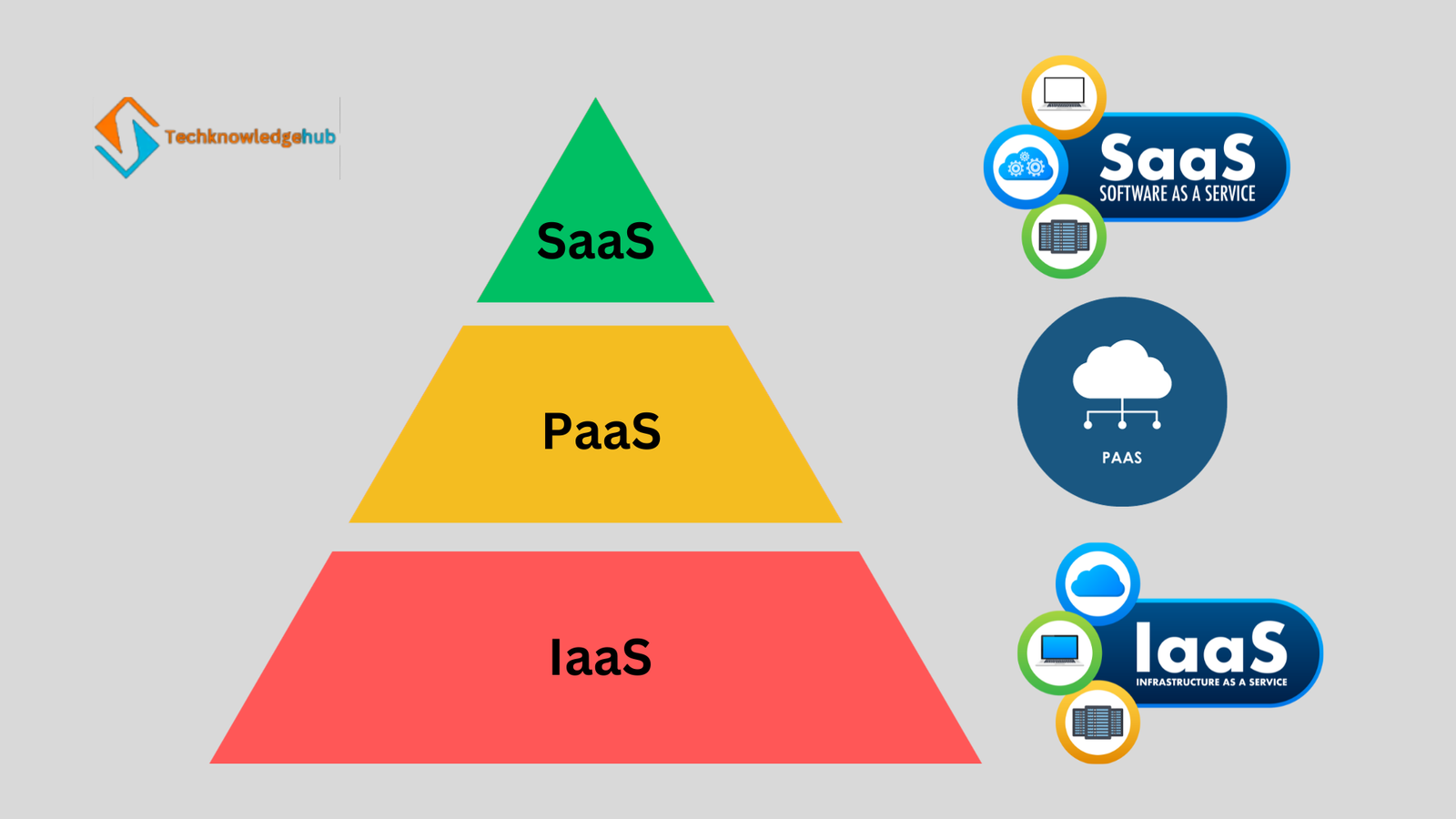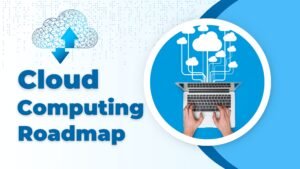In the rapidly evolving world of technology, businesses and individuals are constantly seeking innovative solutions to meet their computing and data storage needs. Cloud computing has emerged as a game-changer, offering a range of service models that cater to diverse requirements. In this article, we will explore three fundamental cloud service models: Infrastructure as a Service (IaaS), Platform as a Service (PaaS), and Software as a Service (SaaS).
Introduction to Cloud Service Models
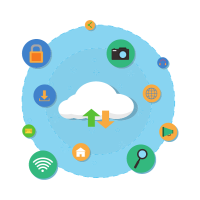
Definition of Cloud Computing
Cloud computing is a technology that allows users to access and utilize computing resources over the internet, rather than relying on local servers or personal computers. It provides a scalable and flexible solution for data storage, processing, and application deployment.
Overview of Cloud Service Models
Cloud service models refer to the various categories of cloud computing services that provide on-demand access to computing resources over the internet. These models offer a flexible and cost-effective way to utilize technology without the need for substantial infrastructure investments
There are three primary service models:
1.Infrastructure as a Service (IaaS)
2.Platform as a Service (PaaS)
3.Software as a Service (SaaS)
1.Infrastructure as a Service (IaaS):
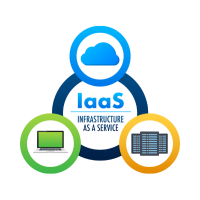
Infrastructure as a service (IaaS) is the most flexible category of cloud services, as it provides you the maximum amount of control for your cloud resources. In an IaaS model, the cloud provider is responsible for maintaining the hardware, network connectivity (to the internet), and physical security. You’re responsible for everything else: operating system installation, configuration, and maintenance; network configuration; database and storage configuration; and so on. With IaaS, you’re essentially renting the hardware in a cloud datacenter, but what you do with that hardware is up to you.
Shared responsibility model
The shared responsibility model applies to all the cloud service types. IaaS places the largest share of responsibility with you. The cloud provider is responsible for maintaining the physical infrastructure and its access to the internet. You’re responsible for installation and configuration, patching and updates, and security.
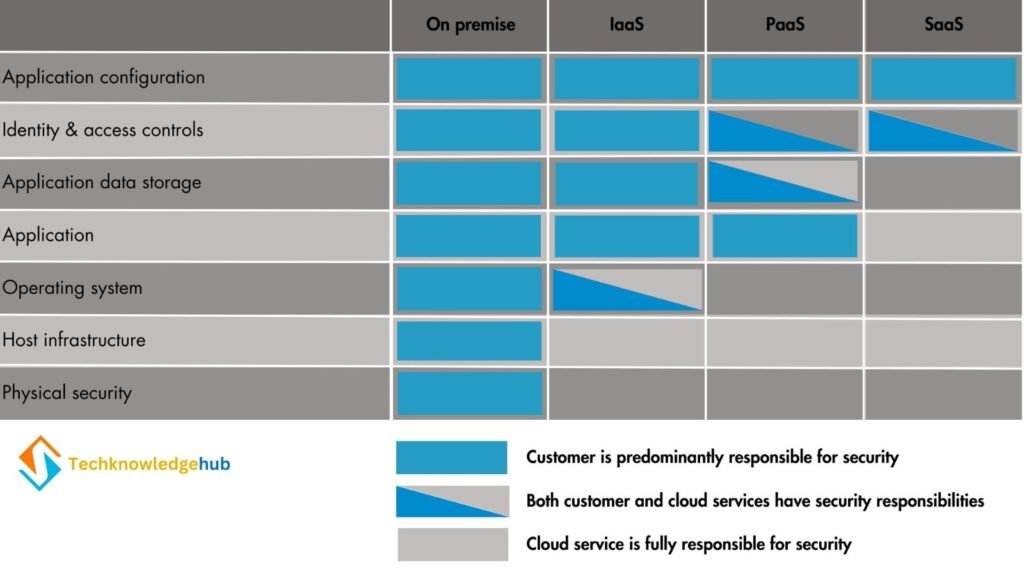
Advantages:
Scalability
IaaS allows businesses to easily scale their infrastructure up or down based on demand. This scalability is particularly advantageous for organizations with fluctuating workloads, as they can ensure optimal performance without over-provisioning resources.
Cost Savings
With IaaS, users pay only for the resources they use, eliminating the need for substantial upfront capital expenditures on hardware and data centers. This cost-effectiveness is especially beneficial for startups and small businesses.
Flexibility
IaaS provides a high degree of flexibility. Users have the freedom to configure their virtual infrastructure to meet specific needs, such as choosing the operating system, network settings, and storage solutions.
Reduced Maintenance
Cloud service providers handle the maintenance and management of the underlying hardware, including servers and networking equipment. This frees up IT teams from routine maintenance tasks, allowing them to focus on more strategic activities.
Rapid Deployment
IaaS offers quick deployment of virtual machines and resources. This feature is invaluable for software development and testing, where developers can create and test applications without the delay of setting up physical hardware.
Disaster Recovery
Cloud-based IaaS solutions often include built-in disaster recovery features. Data can be replicated across multiple data centers, ensuring data redundancy and minimizing the risk of data loss due to hardware failures.
Disadvantages:
Security Concerns
IaaS raises security concerns, as users must trust the cloud service provider to safeguard their data and infrastructure. While providers implement security measures, data breaches and security incidents can still occur.
Data Privacy
The location of data in the cloud and compliance with data privacy regulations can be challenging. Users need to understand the legal implications of storing data in various regions and ensure compliance with relevant laws.
Vendor Lock-In
Migrating from one IaaS provider to another or from IaaS to an on-premises solution can be complex and costly. This can create a sense of vendor lock-in, where users are heavily dependent on a specific provider’s infrastructure and services.
Technical Expertise
While IaaS offers flexibility, it also requires a certain level of technical expertise to configure and manage virtual machines and infrastructure effectively. Small businesses or individuals with limited technical knowledge may find this challenging.
Downtime and Reliability
IaaS relies on the availability and reliability of the cloud provider’s infrastructure. Downtime can occur due to maintenance or unexpected outages. Users must consider service-level agreements (SLAs) and redundancy options to mitigate this risk.
Cost Management
While IaaS can be cost-effective, it requires careful cost management. Without proper monitoring and resource optimization, costs can escalate. Users need to actively manage their infrastructure to avoid unexpected expenses.
Some Scenarios based questions:
Certainly, here are some scenario-based questions related to Infrastructure as a Service (IaaS) in cloud computing:
- Scenario: A startup is looking to launch its e-commerce website. They anticipate a surge in traffic during the holiday season. Which cloud service model, including IaaS, would be most suitable for them, and why?
- Question: Considering the anticipated traffic spikes during the holiday season, which cloud service model, such as IaaS, would provide the scalability and cost-effectiveness needed to handle increased web traffic?
- Scenario: A software development company is expanding and needs a dedicated environment for testing and development. They want to avoid the complexities of setting up and managing physical hardware. Which cloud service model should they choose, and what are the benefits?
- Question: In this scenario, which cloud service model, like IaaS, would be the best choice for the software development company’s need for a flexible and hassle-free testing and development environment? What specific benefits would they gain from using IaaS?
- Scenario: A research institution is running data-intensive simulations for climate modeling. They require high-performance computing resources for these tasks. Which cloud service model, specifically IaaS, would be most appropriate, and how can it benefit them?
- Question: To meet the demands of data-intensive simulations, what cloud service model, such as IaaS, should the research institution consider? How would using IaaS benefit their high-performance computing tasks?
- Scenario: A small business is concerned about data security and wants to have control over its infrastructure. However, they also need a cost-effective solution. Which cloud service model, including IaaS, would strike the right balance for them, and why?
- Question: In this scenario, how can a small business ensure both control over its infrastructure and cost-effectiveness by choosing a specific cloud service model like IaaS? What features of IaaS would be beneficial to them?
- Scenario: A media company needs to deliver high-definition video content to viewers worldwide. They want to minimize load times and ensure a seamless user experience. Which cloud service model, such as IaaS, would be ideal for content delivery, and why?
- Question: For a media company aiming to provide high-quality video content with minimal load times, which cloud service model, including IaaS, should they consider for efficient content delivery? What advantages does IaaS offer in this context?
These scenario-based questions help you think about the practical applications of IaaS in various situations and how it can address specific needs and challenges for different organizations and projects.
2.Platform as a Service (PaaS):
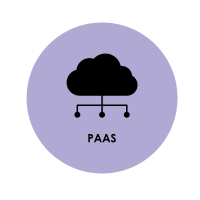
Platform as a service (PaaS) is a middle ground between renting space in a datacenter (infrastructure as a service) and paying for a complete and deployed solution (software as a service). In a PaaS environment, the cloud provider maintains the physical infrastructure, physical security, and connection to the internet. They also maintain the operating systems, middleware, development tools, and business intelligence services that make up a cloud solution. In a PaaS scenario, you don’t have to worry about the licensing or patching for operating systems and databases.
PaaS is well suited to provide a complete development environment without the headache of maintaining all the development infrastructure.
Shared responsibility model
The shared responsibility model applies to all the cloud service types. PaaS splits the responsibility between you and the cloud provider. The cloud provider is responsible for maintaining the physical infrastructure and its access to the internet, just like in IaaS. In the PaaS model, the cloud provider will also maintain the operating systems, databases, and development tools. Think of PaaS like using a domain joined machine: IT maintains the device with regular updates, patches, and refreshes.
Depending on the configuration, you or the cloud provider may be responsible for networking settings and connectivity within your cloud environment, network and application security, and the directory infrastructure.
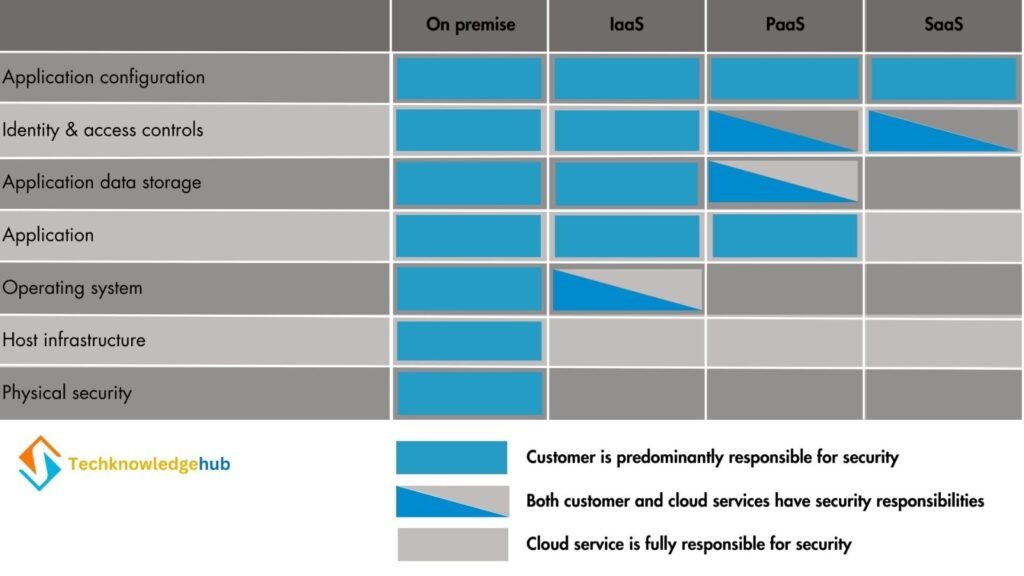
Advantages:
Platform as a Service (PaaS) offers numerous advantages in cloud computing, making it a popular choice for developers and businesses. Here are the key advantages of PaaS in the cloud:
- Simplified Development: PaaS provides a comprehensive platform for application development, offering pre-configured development tools, libraries, and runtime environments. This simplifies the development process, allowing developers to focus on coding and functionality rather than infrastructure setup.
- Faster Time-to-Market: With PaaS, developers can rapidly build and deploy applications, resulting in faster time-to-market. Pre-built components and automatic scaling capabilities streamline the development cycle, enabling quicker releases and updates.
- Cost-Efficiency: PaaS follows a pay-as-you-go model, which means users only pay for the resources and services they use. This cost-efficiency eliminates the need for significant upfront investments in hardware and infrastructure.
- Scalability: PaaS platforms offer automatic scaling, ensuring that applications can handle changing workloads without manual intervention. This scalability is essential for accommodating variations in user demand.
- High-Level Abstraction: PaaS abstracts the underlying infrastructure, making it easier for developers to write and run applications without worrying about server management. This abstraction simplifies the development process and reduces administrative overhead.
- Collaboration and Teamwork: PaaS platforms often include collaboration features, enabling multiple developers to work on the same project. This promotes teamwork, version control, and code sharing, enhancing productivity and code quality.
- Multi-Tenancy: PaaS supports multi-tenancy, allowing multiple users or organizations to share the same platform while maintaining data and application isolation. This is valuable for service providers and businesses with multiple teams.
- Automatic Updates: PaaS providers manage platform updates, including security patches and feature enhancements. This ensures that the platform remains up-to-date and secure, reducing the maintenance burden on users.
- Security Features: PaaS platforms typically include built-in security features such as encryption, authentication, access control, and compliance tools. This helps protect applications and data and simplifies security management.
- Scalable Storage: PaaS platforms offer scalable storage options, enabling applications to store and retrieve data as needed. This flexibility is vital for applications that experience fluctuating data storage requirements.
- Integration and Middleware: PaaS includes middleware components that simplify integration with other services and applications. This makes it easier for developers to connect their applications to databases, messaging services, and external APIs.
- Monitoring and Analytics: PaaS platforms often provide monitoring and analytics tools that offer insights into application performance, resource utilization, and user behavior. This data helps developers optimize their applications and make data-driven decisions.
- Continuous Integration and Continuous Delivery (CI/CD): PaaS supports CI/CD pipelines, enabling developers to automate the building, testing, and deployment of their applications. This accelerates the development cycle and ensures rapid updates.
- Flexible Service Catalog: PaaS platforms often offer a catalog of pre-built services and APIs that developers can easily incorporate into their applications. This reduces development time and promotes innovation by allowing developers to leverage existing functionality.
- Vendor Support: PaaS providers offer customer support and services, ensuring that users have assistance when needed. This support can be invaluable for troubleshooting, optimization, and scaling applications.
Disadvantages:
While Platform as a Service (PaaS) offers numerous advantages, it also comes with certain disadvantages that users should consider. Here are the key disadvantages of PaaS in cloud computing:
- Limited Control: PaaS abstracts much of the underlying infrastructure, which means users have limited control over the underlying hardware and software components. This can be a disadvantage for organizations that require precise control over the entire technology stack.
- Vendor Lock-In: PaaS platforms are often specific to a particular cloud provider, which can create a sense of vendor lock-in. Transitioning from one PaaS provider to another or moving from PaaS to an on-premises solution can be complex and costly.
- Security Concerns: While PaaS platforms offer security features, users must trust the platform provider to maintain robust security measures. Data breaches and security incidents can still occur, raising concerns about data security and compliance.
- Customization Limitations: PaaS platforms provide pre-configured environments and tools, which may not align with the specific needs of some applications. Customization options may be limited, making it challenging to meet unique requirements.
- Dependency on Platform Provider: Users are dependent on the platform provider for updates, maintenance, and service availability. Any disruptions or changes in the provider’s services can impact users’ applications and operations.
- Costs Can Escalate: While PaaS can be cost-efficient, costs can escalate if not carefully monitored and managed. Users may end up paying for unused or unnecessary resources and services.
- Integration Challenges: While PaaS platforms offer integration capabilities, integrating with external services or legacy systems can be challenging, especially when the platform provider’s tools and services don’t align with existing technologies.
- Data Location and Compliance: Storing data in the cloud may raise concerns about data location and compliance with data protection regulations. Users must ensure that data is stored in regions that comply with relevant laws.
- Limited Support for Legacy Applications: PaaS platforms are optimized for modern, cloud-native applications. Legacy applications that rely on specific configurations or older technologies may not be well-supported on PaaS.
- Learning Curve: Users may need to adapt to the specific tools and technologies provided by the PaaS platform. This can result in a learning curve for developers who are accustomed to different development environments.
- Resource Constraints: Some PaaS platforms impose resource constraints, limiting the available compute power, storage, or network bandwidth. This can be a drawback for applications that require high resource utilization.
- Network Latency: PaaS platforms rely on internet connectivity to access resources. This can introduce network latency, which may affect the performance of real-time or latency-sensitive applications.
- Data Portability: Moving data and applications between different PaaS providers or between PaaS and on-premises environments can be complex, requiring data migration strategies and careful planning.
- Service Availability: PaaS platforms are subject to service outages and downtime, which can impact application availability. Users must consider service-level agreements (SLAs) and redundancy options to mitigate this risk.
Some Scenarios based questions:
Certainly, here are some scenario-based questions related to Platform as a Service (PaaS) in cloud computing:
- Scenario: A startup is focused on developing a new mobile app for both Android and iOS platforms. They have a small development team and need to ensure a fast time-to-market. Which cloud service model, including PaaS, would be most suitable for their mobile app development, and why?
- Question: In this scenario, which cloud service model, such as PaaS, would be the most suitable for the startup’s mobile app development project, and what specific benefits does PaaS offer for achieving a fast time-to-market?
- Scenario: A large enterprise is seeking to modernize its legacy software applications to improve agility and reduce operational costs. They have a wide range of existing applications and need to integrate with other services. How can PaaS in the cloud help them with this modernization effort?
- Question: In the context of modernizing legacy applications, how can PaaS in the cloud facilitate the enterprise’s goal of improving agility and reducing operational costs? What role does PaaS play in integrating legacy applications with other services?
- Scenario: A software development company is looking to build a web application for a client. The project requires collaborative development by a distributed team of developers. Which cloud service model, including PaaS, would be the most suitable for this scenario, and what collaborative features does PaaS offer?
- Question: For a software development company working on a collaborative web application project with a distributed team of developers, which cloud service model, such as PaaS, is the most suitable choice? What collaborative features does PaaS provide to enhance teamwork in this scenario?
- Scenario: An e-commerce company experiences seasonal spikes in website traffic, especially during holiday sales events. They need a solution that can automatically scale to handle increased traffic and provide a seamless shopping experience. How can PaaS assist in this scenario, and what specific benefits does it offer for managing traffic spikes?
- Question: In the context of an e-commerce company dealing with seasonal traffic spikes, how can PaaS help them ensure automatic scaling and a seamless shopping experience during peak sales events? What are the advantages of using PaaS for managing traffic fluctuations?
- Scenario: A healthcare startup is developing a telemedicine platform that requires secure and compliant handling of patient data. How can PaaS in the cloud support this scenario, and what specific security and compliance features does PaaS provide for healthcare applications?
- Question: For a healthcare startup building a telemedicine platform that demands secure and compliant patient data handling, how can PaaS in the cloud address these requirements? What security and compliance features does PaaS offer for healthcare applications?
These scenario-based questions help you think about practical applications of PaaS in various real-world situations and how it can address specific business needs and challenges.
3.Software as a Service (SaaS):
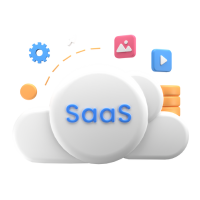
Software as a service (SaaS) is the most complete cloud service model from a product perspective. With SaaS, you’re essentially renting or using a fully developed application. Email, financial software, messaging applications, and connectivity software are all common examples of a SaaS implementation.
While the SaaS model may be the least flexible, it’s also the easiest to get up and running. It requires the least amount of technical knowledge or expertise to fully employ.
Shared responsibility model
The shared responsibility model applies to all the cloud service types. SaaS is the model that places the most responsibility with the cloud provider and the least responsibility with the user. In a SaaS environment you’re responsible for the data that you put into the system, the devices that you allow to connect to the system, and the users that have access. Nearly everything else falls to the cloud provider. The cloud provider is responsible for physical security of the datacenters, power, network connectivity, and application development and patching.
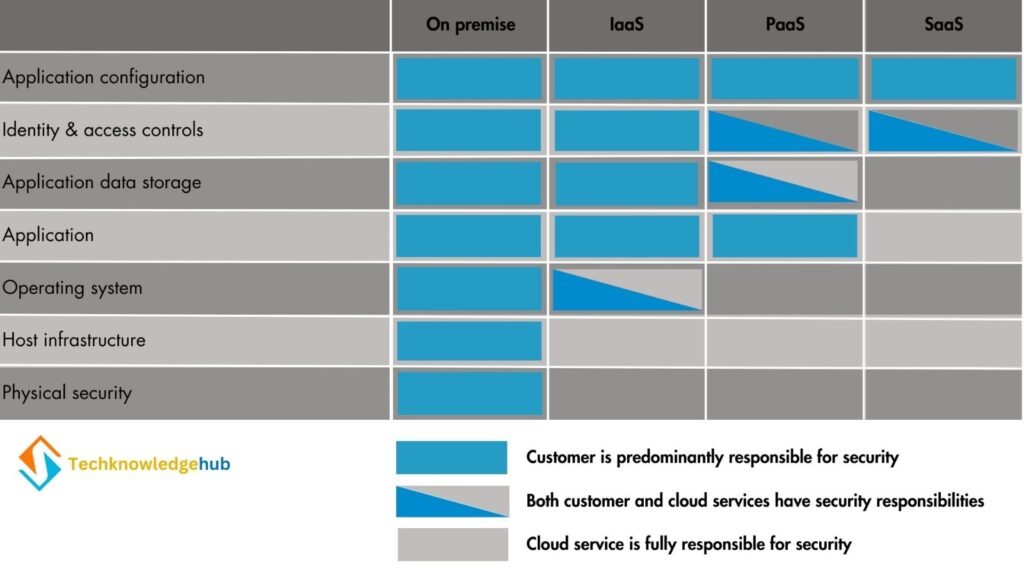
Advantages:
Software as a Service (SaaS) offers numerous advantages in cloud computing, making it a popular choice for businesses and individuals. Here are the key advantages of SaaS in the cloud:
- Accessibility: SaaS applications are accessible from any device with an internet connection and a web browser. This accessibility allows users to work or access services from virtually anywhere, promoting remote work and flexibility.
- No Installation or Maintenance: SaaS applications are hosted and maintained by the service provider. Users do not need to install, update, or maintain software locally, reducing the burden on IT departments and individual users.
- Cost-Efficiency: SaaS follows a subscription-based pricing model, eliminating the need for upfront software licenses and hardware investments. Users pay only for the services they use, which can result in cost savings.
- Rapid Deployment: SaaS applications can be deployed quickly, often with just a few clicks. This rapid deployment accelerates time-to-value, making it ideal for businesses that need to implement solutions promptly.
- Automatic Updates: SaaS providers handle software updates and maintenance, ensuring that users always have access to the latest features and security enhancements without manual intervention.
- Scalability: SaaS applications can scale with user demand. Users can easily add or reduce licenses and resources as needed, ensuring that the software can adapt to changing workloads.
- Cross-Device Compatibility: SaaS applications are designed to work on various devices and operating systems. This compatibility simplifies user experiences and supports a diverse range of devices.
- Data Security: SaaS providers invest in robust security measures to protect user data. This includes data encryption, access controls, and compliance with industry-specific regulations.
- Accessibility to Advanced Features: SaaS applications often include advanced features and functionality that might be expensive or complex to implement in traditional software. This enables users to access powerful tools without the need for extensive customization.
- Collaboration Features: Many SaaS applications are designed with collaboration in mind. They offer features like real-time document editing, team messaging, and project management, making it easier for teams to work together.
- Vendor Support: SaaS providers offer customer support and services, ensuring that users have assistance when needed. This support can be invaluable for troubleshooting, training, and technical inquiries.
- Data Backups and Recovery: SaaS providers typically include data backup and recovery solutions to prevent data loss due to unexpected events or user errors.
- Frequent Innovation: SaaS applications are continuously updated with new features and improvements, promoting innovation and keeping users on the cutting edge of technology.
- Business Continuity: SaaS applications are hosted in redundant data centers, reducing the risk of application downtime. This enhances business continuity and ensures that users can access critical services.
- Global Accessibility: SaaS applications are available globally, allowing businesses to serve international customers and expand their reach without setting up local infrastructure.
Disadvantages:
Software as a Service (SaaS) offers many advantages, but it also has some disadvantages that users should be aware of. Here are the key disadvantages of SaaS in the cloud:
Internet Dependency
SaaS applications require a reliable internet connection. If the internet is slow or unavailable, users may experience disruptions in service access and functionality.
Limited Customization
SaaS applications are typically designed to be one-size-fits-all, which can limit customization. Businesses with unique requirements may find it challenging to adapt SaaS applications to their specific needs.
Data Security Concerns
Storing data in the cloud can raise security concerns, as users must trust the SaaS provider to protect their data. Data breaches or security incidents can lead to the exposure of sensitive information.
Data Privacy and Compliance
Users must ensure that SaaS providers comply with data privacy regulations relevant to their industry and region. The location of data storage and processing may affect compliance.
Vendor Lock-In
SaaS applications are often tied to a specific provider’s ecosystem, creating a sense of vendor lock-in. Transitioning to another provider or back to on-premises solutions can be complex and costly.
Limited Control
Users have limited control over the software’s infrastructure, updates, and maintenance. This lack of control may make it challenging to meet specific security or compliance requirements.
Cost Over Time
While SaaS often follows a subscription model, costs can accumulate over time. Subscriptions and user licenses may result in ongoing expenses that surpass the upfront cost of traditional software licenses.
Service Downtime
SaaS applications are subject to service outages and downtime, which can disrupt business operations. Users must carefully review service-level agreements (SLAs) to understand downtime expectations.
Integration Challenges
Integrating SaaS applications with existing on-premises systems or other SaaS applications can be complex, especially when compatibility and customization are needed.
Limited Offline Access
SaaS applications typically require an internet connection for access. When offline access is crucial, users may face limitations in functionality and data accessibility.
Data Migration Complexity
Moving data and applications between different SaaS providers or between SaaS and on-premises solutions can be challenging. Data migration strategies are often necessary, adding complexity to the process.
Resource Sharing
In multi-tenant SaaS environments, users share the same infrastructure with other customers. Resource sharing may lead to performance issues during peak usage times.
Lack of Redundancy
Users may not have control over the redundancy and backup solutions in place for their SaaS applications, increasing the risk of data loss in case of service disruptions.
Limited Offline Access
SaaS applications typically require an internet connection for access. When offline access is crucial, users may face limitations in functionality and data accessibility.
Data Ownership and Retrieval
Users may face challenges when retrieving their data from SaaS providers, as data ownership and retrieval procedures can vary among providers.
Complex Licensing Models
SaaS pricing and licensing models can be complex, making it important for users to carefully understand subscription terms and limitations.
Some Scenarios based questions:
Certainly, here are some scenario-based questions related to Software as a Service (SaaS) in cloud computing:
Scenarios:
- A small business is looking for an affordable solution to manage its customer relationships and streamline sales processes. They have limited IT resources.
- Which cloud service model, including SaaS, would be most suitable for their customer relationship management (CRM) needs, and why?
- A global company with multiple offices and remote employees needs to improve collaboration and document sharing among its teams. They require a solution that can facilitate real-time document editing and project management.
- How can SaaS in the cloud support this scenario, and what collaborative features does SaaS provide?
- Question: For a global company seeking to enhance collaboration and document sharing among multiple teams and remote employees, how can SaaS in the cloud address their requirements for real-time document editing and project management? What collaborative features does SaaS offer in this scenario?
- Scenario: An educational institution is planning to implement an online learning platform for its students. The platform must be accessible from various devices, provide interactive learning tools, and ensure data security. How can SaaS in the cloud assist in this educational scenario, and what security and accessibility features does SaaS offer?
- Question: In the context of an educational institution developing an online learning platform, how can SaaS in the cloud help meet their requirements for device accessibility, interactive learning tools, and data security? What security and accessibility features does SaaS provide for educational applications?
- Scenario: A healthcare organization needs to manage patient records and provide secure access to medical information for both healthcare professionals and patients. How can SaaS in the cloud support this healthcare scenario, and what security and data management features does SaaS offer for healthcare applications?
- Question: For a healthcare organization tasked with managing patient records and enabling secure access to medical information, how can SaaS in the cloud address their needs? What specific security and data management features does SaaS offer for healthcare applications?
- Scenario: A small marketing agency with remote teams is looking for a solution to streamline marketing campaigns, automate email marketing, and track campaign performance. How can SaaS in the cloud assist in this marketing scenario, and what marketing and analytics features does SaaS provide?
- Question: In this scenario, which cloud service model, such as SaaS, is the most suitable choice for the small business’s CRM needs, considering their limited IT resources and budget constraints? What specific benefits does SaaS offer for managing customer relationships?
These scenario-based questions highlight practical applications of SaaS in real-world situations and how it can address specific organizational and industry requirements.


Conclusion
In conclusion, IaaS, PaaS, and SaaS are key cloud service models, each offering different levels of management and abstraction to meet diverse business and individual needs in cloud computing.
IaaS (Infrastructure as a Service)
IaaS provides the foundational building blocks for cloud computing. It offers virtualized resources, including servers, storage, and networking, allowing users to provision and manage infrastructure components without the burden of physical hardware ownership. This model is ideal for businesses seeking scalable and flexible solutions for hosting applications and services. IaaS allows for greater control and customization but requires users to manage and maintain the underlying infrastructure.
PaaS (Platform as a Service)
PaaS takes cloud computing a step further by offering a platform and environment for developers to build, deploy, and manage applications. It abstracts much of the underlying infrastructure complexities, allowing developers to focus on writing code and not worrying about server management or scalability. PaaS is well-suited for software developers and enterprises aiming to streamline application development and deployment processes.
SaaS (Software as a Service)
SaaS is the most user-friendly of the three models, as it delivers fully developed software applications over the internet on a subscription basis. Users access these applications through web browsers, with no need for installation or maintenance. SaaS is excellent for end-users and businesses looking for ready-to-use solutions, such as email services, productivity software, customer relationship management (CRM), and more.
In summary, the choice between IaaS, PaaS, and SaaS depends on specific business needs and technical requirements. For instance, IaaS is best for those who require full control over the infrastructure. Meanwhile, PaaS suits developers seeking to simplify application development. On the other hand, SaaS is ideal for users looking for hassle-free, ready-to-use software solutions. Furthermore, many organizations adopt a combination of these models to create a balanced and efficient cloud strategy that aligns with their goals and resources.
Unique FAQs
IaaS (Infrastructure as a Service):
- Q1: What is the main advantage of IaaS over traditional on-premises infrastructure?
- IaaS offers on-demand scalability, allowing businesses to quickly adapt to changing resource needs without large upfront investments.
- Q2: How does IaaS handle data backups and disaster recovery?
- IaaS typically includes data backup and disaster recovery solutions, ensuring data is protected and recoverable in case of unexpected events.
- Q3: Can I use IaaS to run my own operating systems and software?
- Yes, IaaS allows you to run your own operating systems and software, providing more control and flexibility compared to PaaS and SaaS.
- Q4: What type of organizations benefit the most from IaaS?
- IaaS is ideal for businesses with varying computing needs, development and testing environments, or resource-intensive applications.
- Q5: How is security managed in IaaS environments?
- IaaS providers implement security measures, but users are responsible for securing their virtual machines and applications.
PaaS (Platform as a Service):
- Q1: What is the primary advantage of PaaS for developers?
- PaaS provides a pre-configured platform, allowing developers to focus on coding and application development rather than infrastructure management.
- Q2: Can I use my preferred development tools with PaaS?
- PaaS platforms typically offer a range of development tools, but the choice may be limited to those provided by the platform.
- Q3: How does PaaS support continuous integration and continuous delivery (CI/CD) pipelines?
- PaaS platforms often have built-in tools for automating the building, testing, and deployment of applications, supporting CI/CD processes.
- Q4: Is it possible to scale resources automatically in PaaS?
- Yes, PaaS platforms often include automatic scaling capabilities, ensuring resources can adapt to changing workloads.
- Q5: What types of applications are best suited for PaaS?
- PaaS is well-suited for web and mobile application development, as well as applications that require scalability, collaborative development, and automation.
SaaS (Software as a Service):
- Q1: How do I access SaaS applications?
- SaaS applications are typically accessed through a web browser over the internet, with no need for installation or local software.
- Q2: Can I customize SaaS applications to meet my specific business needs?
- However, customization options for SaaS applications may be limited, meaning that users often need to adapt to the features provided by the service. As a result, businesses must evaluate whether the available features align with their specific needs before adopting a SaaS solution.
- Q3: How often are SaaS applications updated?
- SaaS providers typically release updates and enhancements regularly, ensuring users have access to the latest features and security improvements.
- Q4: What is the primary benefit of SaaS for businesses?
- SaaS reduces the cost and complexity of software management, as providers handle installation, updates, and maintenance.
- Q5: Are SaaS applications suitable for businesses with sensitive data?
- SaaS providers invest in security measures, but businesses must carefully review the provider’s security and compliance features to ensure the protection of sensitive data.

